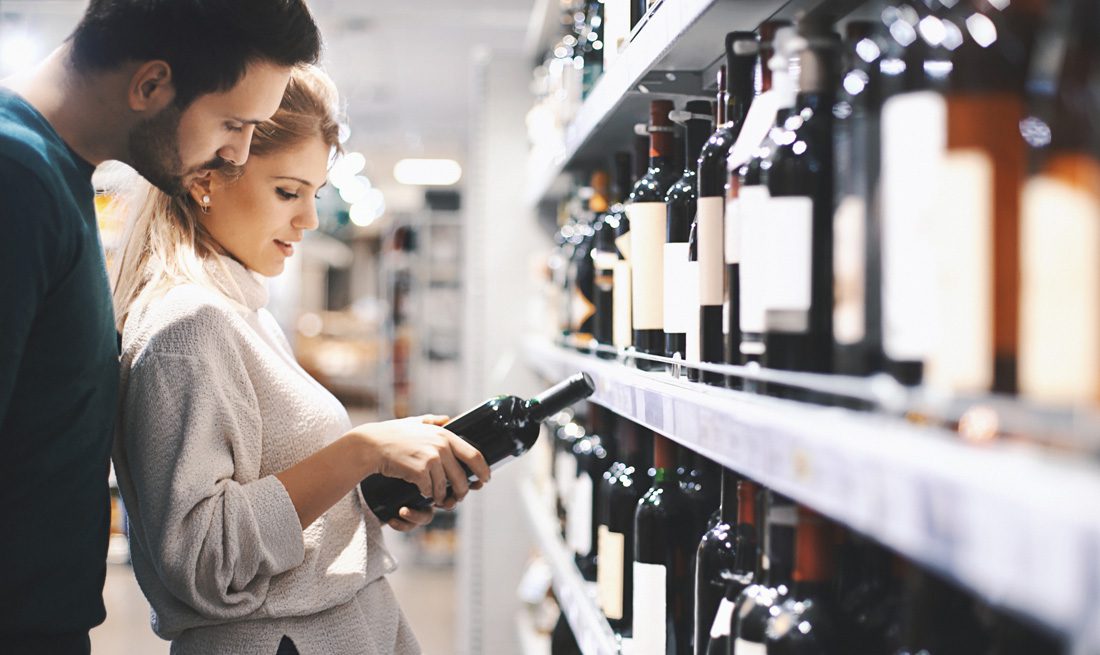Be prepared to buy wine, even if you don’t know wine words!

Buying wine can be a daunting process. You may know what you like, but if you don’t have the vocabulary, it’s tricky to suss out the particular bottle your tastebuds seek. Going the route of picking by way of a pretty label doesn’t always work out. Are Syrah and Shiraz the same grape? Do I like tannins? Why would I want to drink “acid”? It can be intimidating.
All you need are a few key steps and questions to find the right bottle. Thankfully, there are people who have done the research, tasted the wines and even visited the vineyards to explain “terroir” for us. The first step is to find a wine shop. “Also, find the right person, somebody you feel comfortable with,” says Adam Williams of Ansley Wine Merchants.
What’s your style?
“To help customers find something they are going to be happy with, the initial question is always going to be ‘red or white, bubbles or rosé?” says Kaitlyn Hines of Holeman & Finch Bottle Shop.
A secondary question is likely to be whether you like something fruity or earthy. “Just one or two words about what you are looking for helps me pick the right bottle,” says Bethany Taylor of Brookhaven Wines.
“The right questions will tell me a lot about the client’s taste profile,” says Perrine Prieur, owner of her eponymous shop.
Wine descriptions often reach almost poetic description, but a customer doesn’t need to wax poetic to find the right bottle. A savvy shopkeep or wine specialist will ask insightful questions, so even if you don’t have the right wine vocabulary, they can guide you to a winning bottle.
Having a flavor profile you are looking for is helpful, but the opposite can be equally so. “A reference point in terms of something you definitely don’t like is a good way to steer in the right direction,” says Hines.
Where to?
Most wine shops are organized in a particular way to help people find wine. Brookhaven Wines is organized by region. At Perrine’s new shop in Sandy Springs, Old World wines line shelves on the right side, and New World wines flank the left. “At H & F, we have things broken down between a larger section of pinot noir, chardonnay and Napa cabernets, and then we have a catch-all selection of Old World wines, Central European wines in the New World, noncabernet wines from the U.S. and South American wines,” says Hines. “A nice reference point is knowing something you have enjoyed before from a particular place.”
In broad strokes, this division of Old and New World comes down to winemaking styles. Old World wines tend to be lighter in body, with higher acidity and lower alcohol, while New World styles tend to have fuller-bodied, fruitier flavors with higher alcohol levels and lower acidity. There are exceptions to this generalization, but it helps to steer to style. If a customer notes that they enjoy Bordeaux, Taylor picks up on a style immediately. “They like full-bodied reds and cabernet-merlot based blends,” she says. For the adventurous shopper who wants to try something new, she would visit the shelves of Australia or consider an Italian Super Tuscan.
What goes well with…?
When choosing a bottle to pair with a particular meal, Prieur’s number one rule is “what grows together pairs together.” Explain the meal with which you are pairing as a springboard for the selection process.
This is also where price comes in. Is this an everyday bottle or something celebratory? Have a price in mind for what you want to spend. “This is really helpful when someone is picking out wine for you, and it avoids an awkward recommendation of something too expensive for your budget,” says Taylor. A good wine merchant can help you splurge as much as they can help find a great value.
ANSLEY WINE MERCHANTS
404.876.6790
ansleywine.com
@ansleywine
BROOKHAVEN WINES
404.869.5650
brookhavenwines.com
@brookhavenwines
HOLEMAN & FINCH BOTTLE SHOP
404.841.4070
hfbottleshop.com
@hfbottleshop
PERRINE’S WINE SHOP
404.254.5077
perrineswine.com
@perrineswine

















